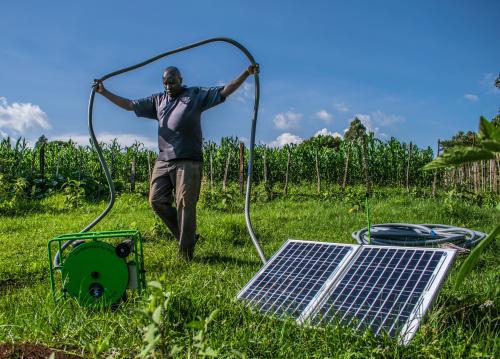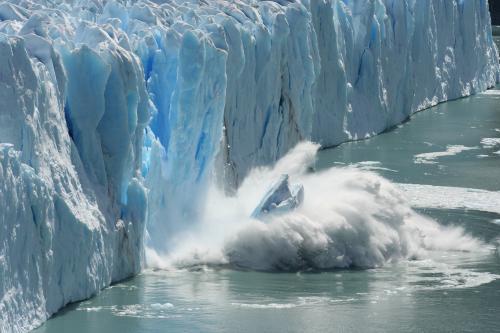COVID-19 hit the countries of the Western Balkans hard. All six economies—Albania, Bosnia and Herzegovina, Kosovo, Montenegro, North Macedonia, and Serbia—were in deep recessions in 2020. But the region is bouncing back in 2021 and expects a return to pre-crisis growth, although fragilities remain.
With a return to growth, attention is shifting towards longer-term issues. At the front of mind is how the Western Balkans can generate green growth, which is particularly difficult given the historic structure of Western Balkan economies. Right now, brown industries (i.e., those that are emissions-intensive) dominate the region, supported by “sticky” brown skills and jobs. Energy intensity is three times higher than the EU average. Most Western Balkan economies have significantly higher carbon dioxide emissions per dollar of GDP than EU countries (Figure 1). Some three-quarters of the region’s power is generated by coal, and the 18 coal power plants across the region emit 2.5 times as much sulfur dioxide as all 221 of the EU’s coal power stations combined. Coal, specifically residential heating, contributes to the poor air quality in cities. However, pollution from coal power plants spreads across neighboring states as well.
Figure 1. Higher carbon dioxide emissions in the Western Balkans than in the EU
 Source: OECD.
Source: OECD.
It is becoming increasingly clear that business as usual is no longer an option, as confirmed at COP26 in Glasgow. The human costs of inaction—increased chronic health conditions and shorter life expectancy due to air pollution and severe weather disasters—are becoming untenable, and economic forces are shifting profoundly. Consumer preferences are evolving, with increased emphasis on lowering emissions in the supply chains of goods and services produced in the Western Balkans. Similarly, investor preferences are changing, and brown industries find it harder and more costly to obtain access to finance. And finally, the advent of carbon pricing at the border (most notably via the EU’s Carbon Border Adjustment Mechanism) threatens to dull the export competitiveness of the Western Balkans, just at the time when the region is trying to integrate more closely into European value chains. This is the focus of our new Regular Economic Report on the Western Balkans.
The recent rise of global energy consumption and the corresponding rise in energy prices during the COVID-19 recovery shows just how hard the transition to green growth will be. Yet, there are also grounds for optimism. Western Balkan countries are not dependent on fossil fuel commodities for exports and government revenues as many large oil and gas exporting countries are. Proximity to the markets, capital, and ideas in Europe’s advanced economies offers an advantage. Despite the dominance of brown industries, we find that the Western Balkan economies already have capabilities in a number of goods and services with green potential; for example, manufacturing parts for renewable electricity generation. Expanding this potential offers a pathway to green competitiveness. Finally, significant resources from development partners—most notably via the European Green Deal—offer a pathway to help finance the transition from brown to green growth. With all these tailwinds, the Western Balkans have the opportunity to leapfrog legacy technologies into manufacturing parts for renewable electricity generation, equipment for environmental monitoring and pollution controls, and mechanical appliances and biodegradable materials for waste and wastewater management.
The starting point for this transition is getting incentives right—for investments, for consumption, and for production. This includes aligning prices to attract investors into modern green assets and to prevent further accumulation of brown assets. Similarly, scarce fiscal space in many Western Balkan countries is wasted by subsidizing renewables and coal-based electricity at the same time (Figure 2). Government action is key: While some Western Balkan countries use taxes and fees to manage local pollutants of air and water and to encourage circularity of products and materials such as plastics that are harmful as waste, these do not go far enough. As of now, no country in the region has a price set on carbon.
Figure 2. Western Balkans economies still subsidize coal-based electricity generation
 Source: World Bank staff based on Miljević (2020).
Source: World Bank staff based on Miljević (2020).
Currently, the Western Balkan economies produce disproportionately higher emissions for their outputs. Yet, even after COP26, Serbia, Kosovo, and Bosnia and Herzegovina, together with Turkey, are the only countries in Southeastern Europe without any deadline to exit coal. As small countries, they will not have a big impact on global climate change. However, the direct local health impact is severe: Exposure to ambient PM2.5 air pollution is the leading cause of death and disability in the Western Balkans. The energy transition is thus paramount.
Aligning the growth strategy of the Western Balkan countries with the green transition is an investment in igniting a completely new growth strategy that is more productive, sustainable, inclusive, and resilient to external shocks. Now is the time to prioritize reforms to stimulate growth and investment. Now is the time to make the structural change away from an unsustainable, brown development path toward a greener future.









Commentary
Greening the recovery from COVID-19 crisis in the Western Balkans
November 12, 2021